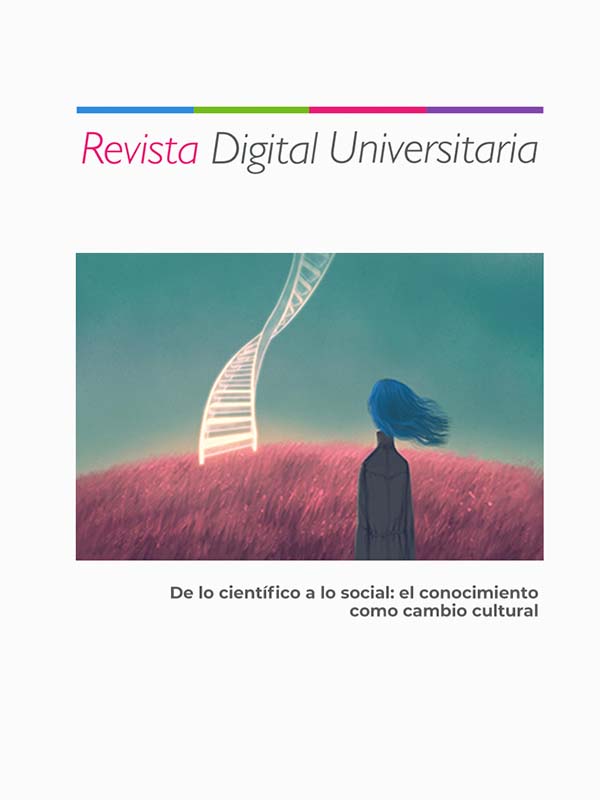Almidón al rescate: creando empaques sostenibles y biodegradables
DOI:
https://doi.org/10.22201/ceide.16076079e.2025.26.1.8Palabras clave:
bioplásticos, contaminación plástica, materiales biodegradables, polímeros sintéticos, sustentabilidadResumen
El uso excesivo de polímeros sintéticos en productos desechables, como bolsas y envases, genera acumulación en vertederos y cuerpos de agua, afectando la salud del ambiente y los seres vivos. Los bioplásticos son una alternativa sostenible, destacando el almidón por su bajo costo y biodegradabilidad, aunque con limitaciones como baja resistencia al agua y propiedades mecánicas pobres. El succinato de polibutileno (pbs) complementa estas propiedades, pero su alto costo y biodegradabilidad limitada lo hacen menos accesible. Las mezclas de almidón y PBS buscan combinar sus ventajas, mejorar la degradación del PBS y reducir costos, ofreciendo una solución más sostenible frente a la contaminación plástica.
→ Leer más
Citas
Adewale, P., Shokrolllahi, M., y Lam, E. (2022). Starch modification for non-food, industrial applications : Market intelligence and critical review. Carbohydrate Polymers, 291(April), 119590. https://doi.org/10.1016/j.carbpol.2022.119590
Agama, E., y Bello, L. A. (2017). Starch as an emulsions stability: the case of octenyl succinic anhydride (OSA) starch. In Current Opinion in Food Science (Vol. 13, pp. 78–83). Elsevier Ltd. https://doi.org/10.1016/j.cofs.2017.02.014
Beluci, N. de C. L., Santos, J. dos, de Carvalho, F. A., y Yamashita, F. (2023). Reactive biodegradable extruded blends of thermoplastic starch and polyesters. Carbohydrate Polymer Technologies and Applications, 5. https://doi.org/10.1016/j.carpta.2022.100274
Cheng, H., Chen, L., McClements, D. J., Yang, T., Zhang, Z., Ren, F., Miao, M., Tian, Y., y Jin, Z. (2021). Starch-based biodegradable packaging materials: A review of their preparation, characterization and diverse applications in the food industry. In Trends in Food Science and Technology (Vol. 114, pp. 70–82). Elsevier Ltd. https://doi.org/10.1016/j.tifs.2021.05.017
Howard, J., Huang, A., Li, Z., Tufekci, Z., Zdimal, V., van der Westhuizen, H. M., von Delft, A., Price, A., Fridman, L., Tang, L. H., Tang, V., Watson, G. L., Bax, C. E., Shaikh, R., Questier, F., Hernandez, D., Chu, L. F., Ramirez, C. M., y Rimoin, A. W. (2021). An evidence review of face masks against COVID-19. In Proceedings of the National Academy of Sciences of the United States of America (Vol. 118, Issue 4). National Academy of Sciences. https://doi.org/10.1073/pnas.2014564118
Lambert, S., y Wagner, M. (2017). Environmental performance of bio-based and biodegradable plastics: The road ahead. Chemical Society Reviews, 46(22), 6855–6871. https://doi.org/10.1039/c7cs00149e
Nanda, S., Patra, B. R., Patel, R., Bakos, J., y Dalai, A. K. (2022). Innovations in applications and prospects of bioplastics and biopolymers: a review. Environmental Chemistry Letters, 20(1), 379–395. https://doi.org/10.1007/s10311-021-01334-4
Othman, A. R., Hasan, H. A., Muhamad, M. H., Ismail, N. ’Izzati, y Abdullah, S. R. S. (2021). Microbial degradation of microplastics by enzymatic processes: a review. Environmental Chemistry Letters, 19(4), 3057–3073. https://doi.org/10.1007/s10311-021-01197-9
Rosenboom, J. G., Langer, R., y Traverso, G. (2022). Bioplastics for a circular economy. Nature Reviews Materials, 7(2), 117–137. https://doi.org/10.1038/s41578-021-00407-8
Suchao-In, K., Koombhongse, P., y Chirachanchai, S. (2014). Starch grafted poly(butylene succinate) via conjugating reaction and its role on enhancing the compatibility. Carbohydrate Polymers, 102(1), 95–102. https://doi.org/10.1016/j.carbpol.2013.11.001
Zhang, S., He, Y., Yin, Y., y Jiang, G. (2019). Fabrication of innovative thermoplastic starch bio-elastomer to achieve high toughness poly(butylene succinate) composites. Carbohydrate Polymers, 206(October), 827–836. https://doi.org/10.1016/j.carbpol.2018.11.036
Publicado
Número
Sección
Licencia
Derechos de autor 2025 Revista Digital Universitaria

Esta obra está bajo una licencia internacional Creative Commons Atribución-NoComercial-CompartirIgual 4.0.

Revista Digital Universitaria es editada por la Universidad Nacional Autónoma de México se distribuye bajo una Licencia Creative Commons Atribución-NoComercial 4.0 Internacional. Basada en una obra en http://revista.unam.mx/.










